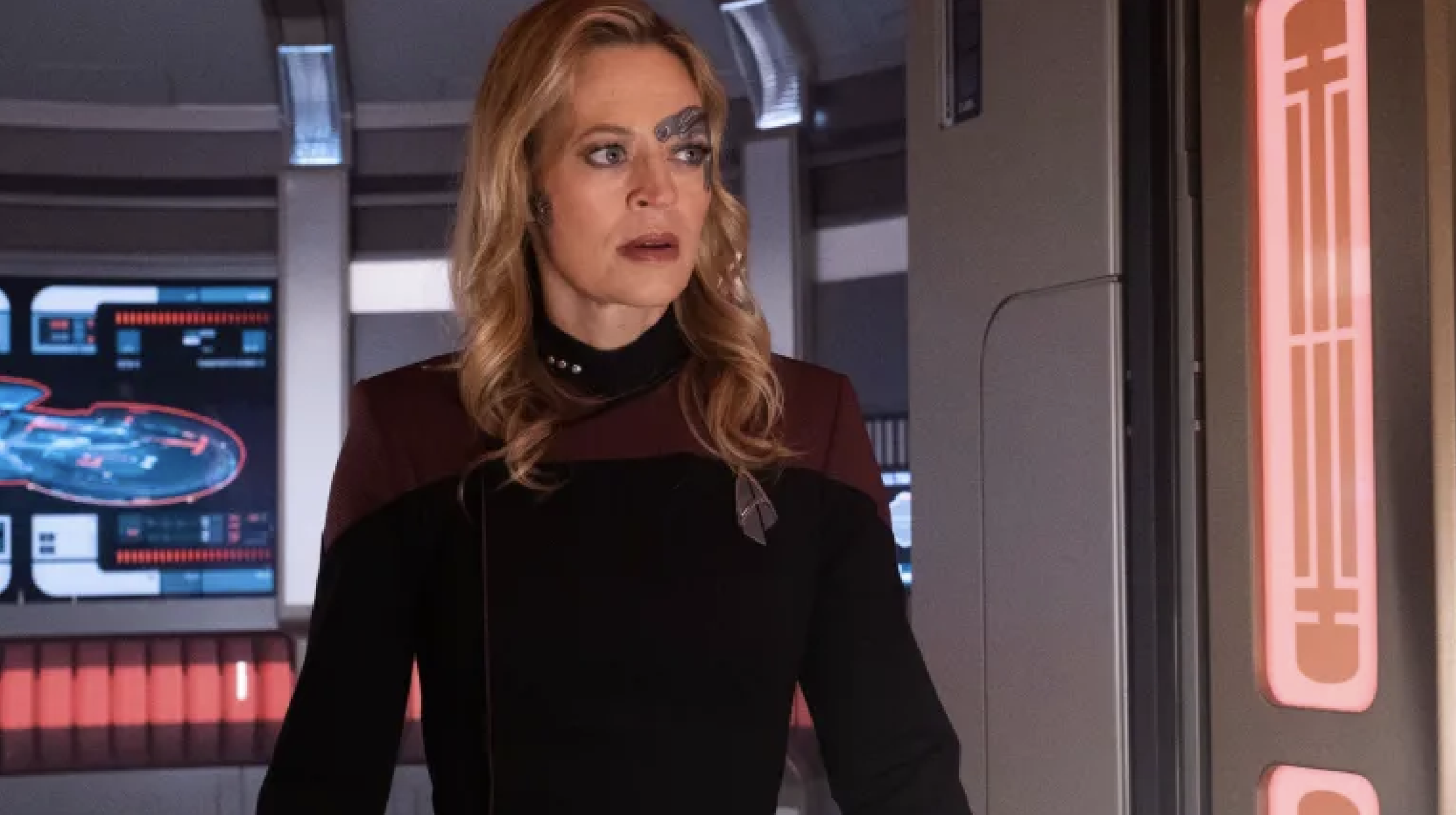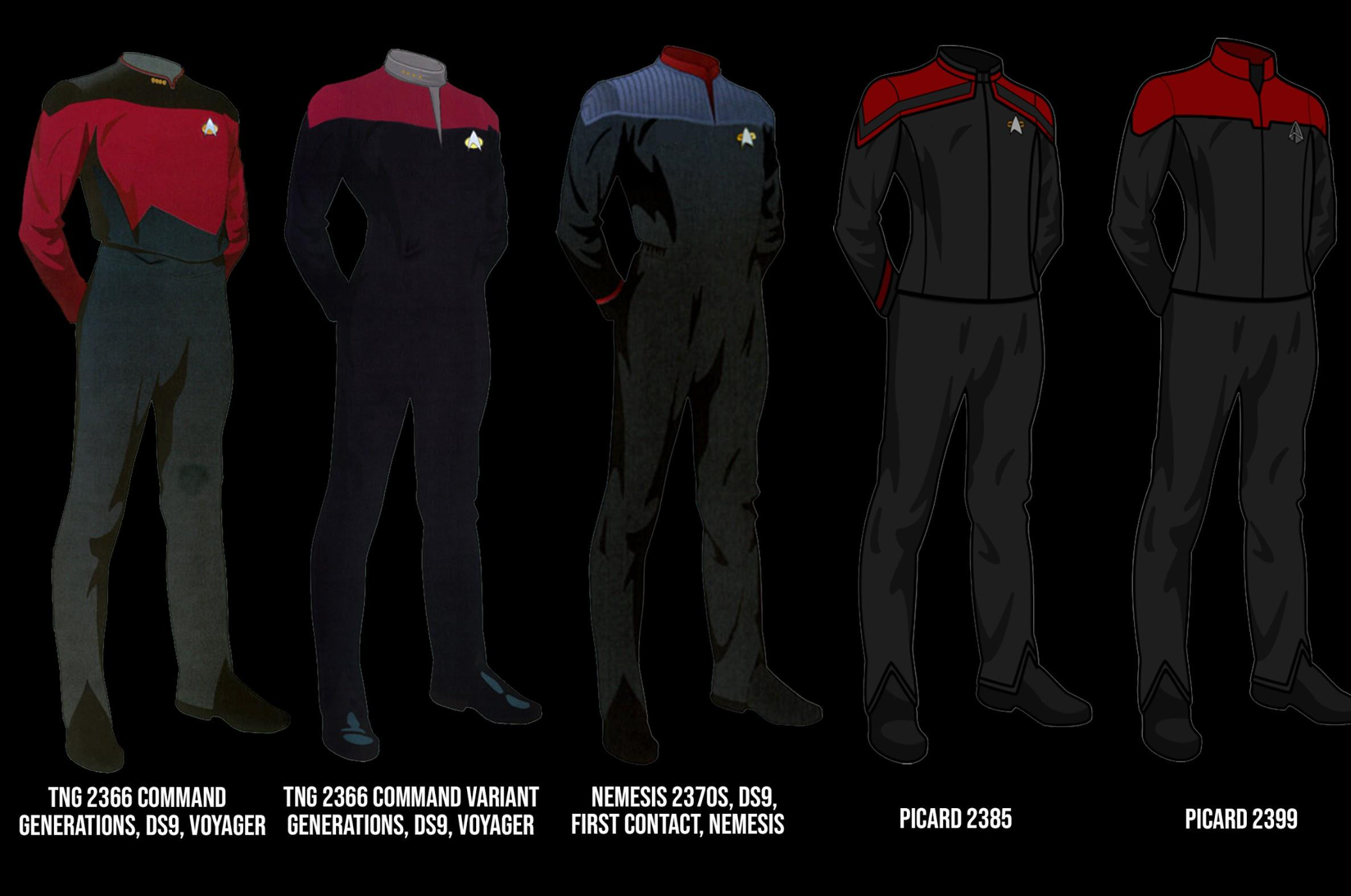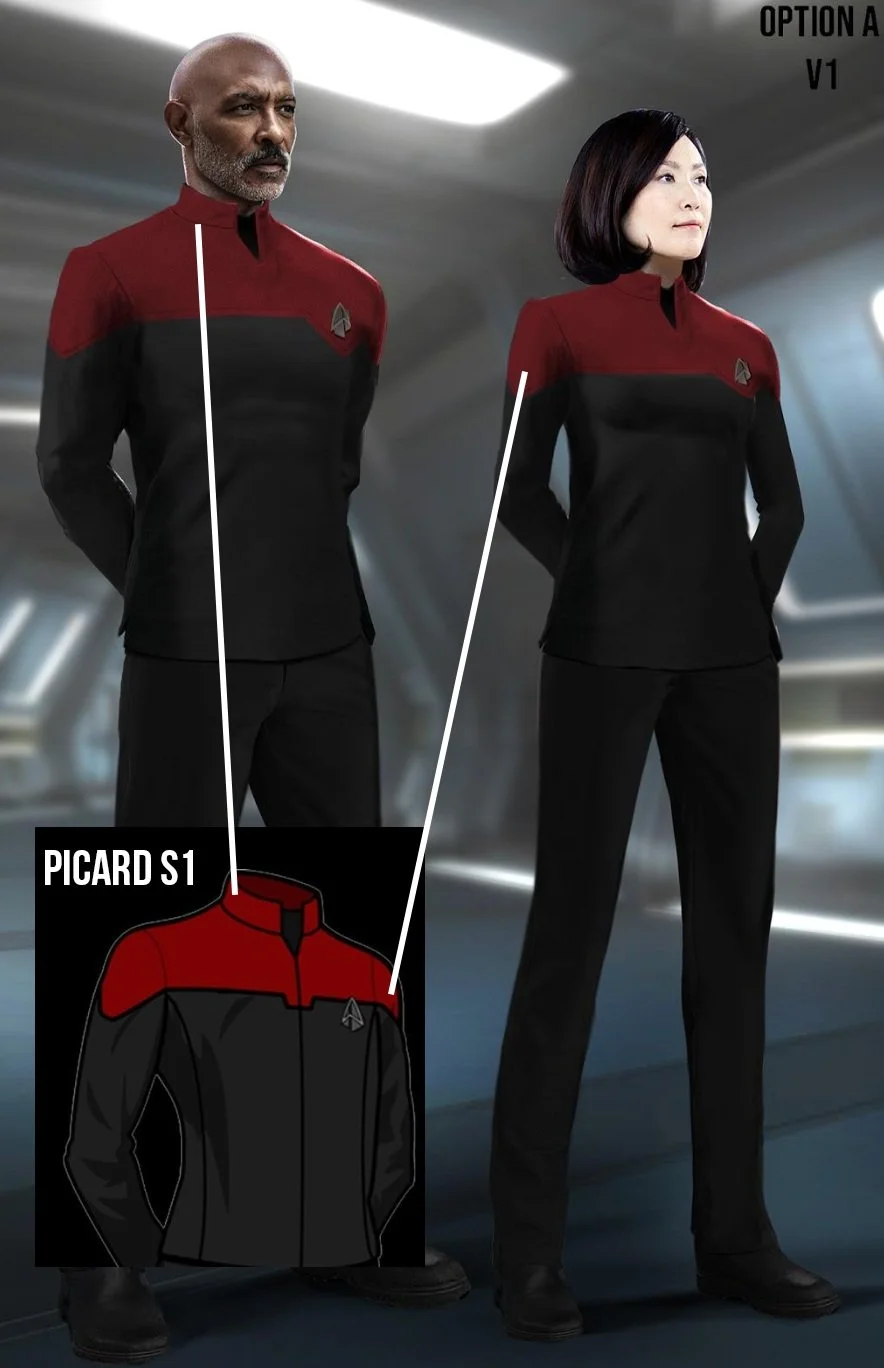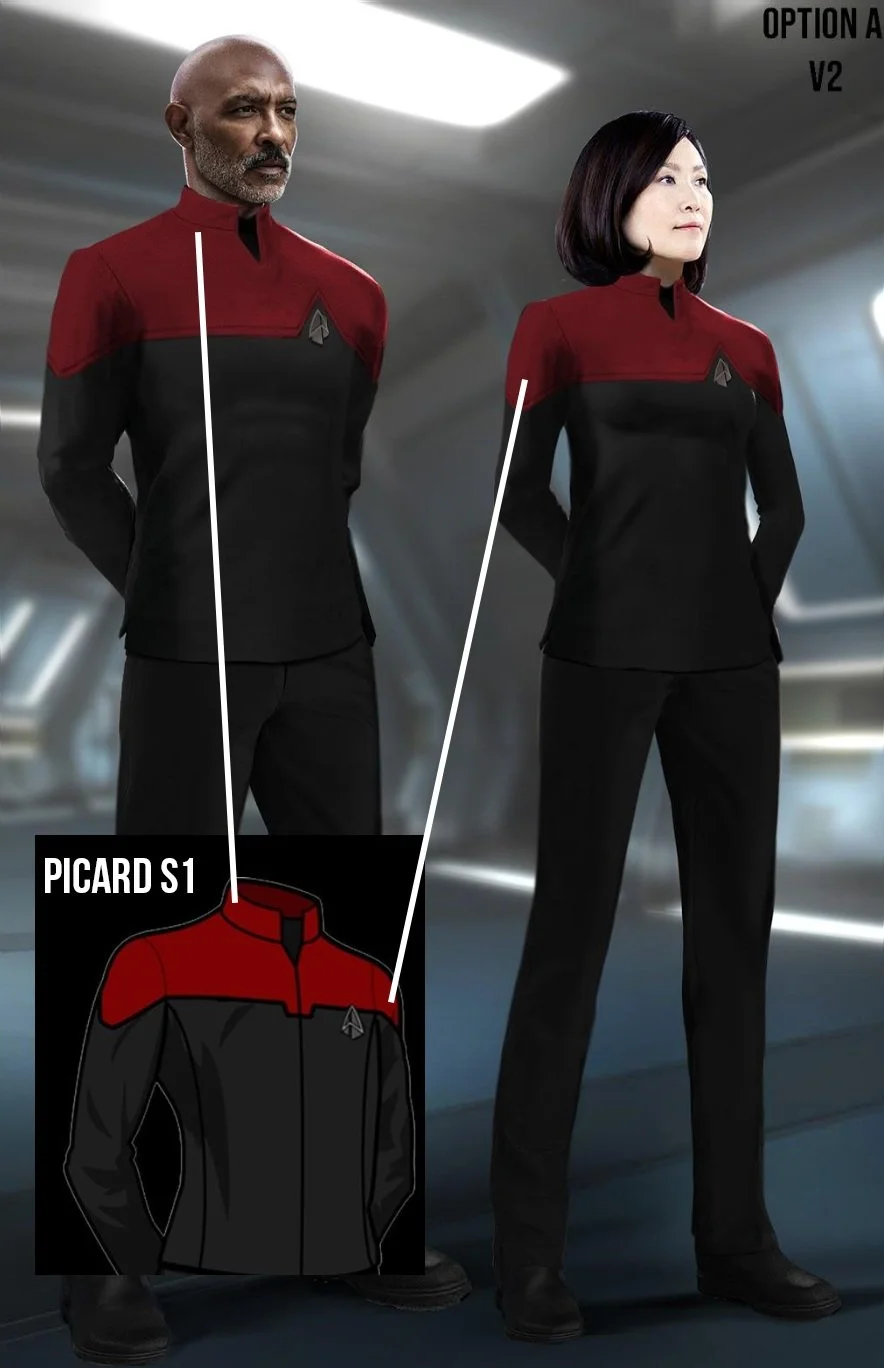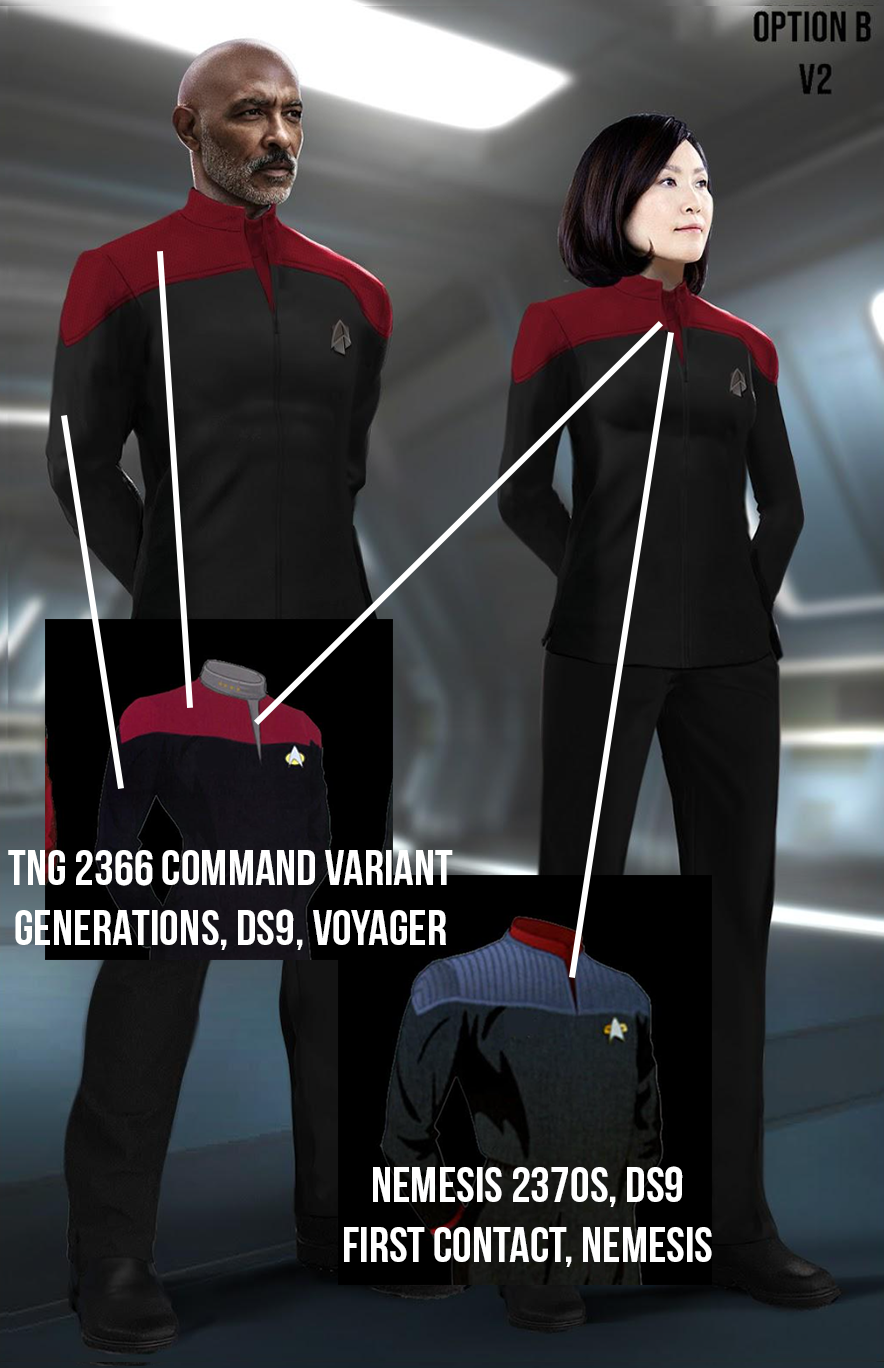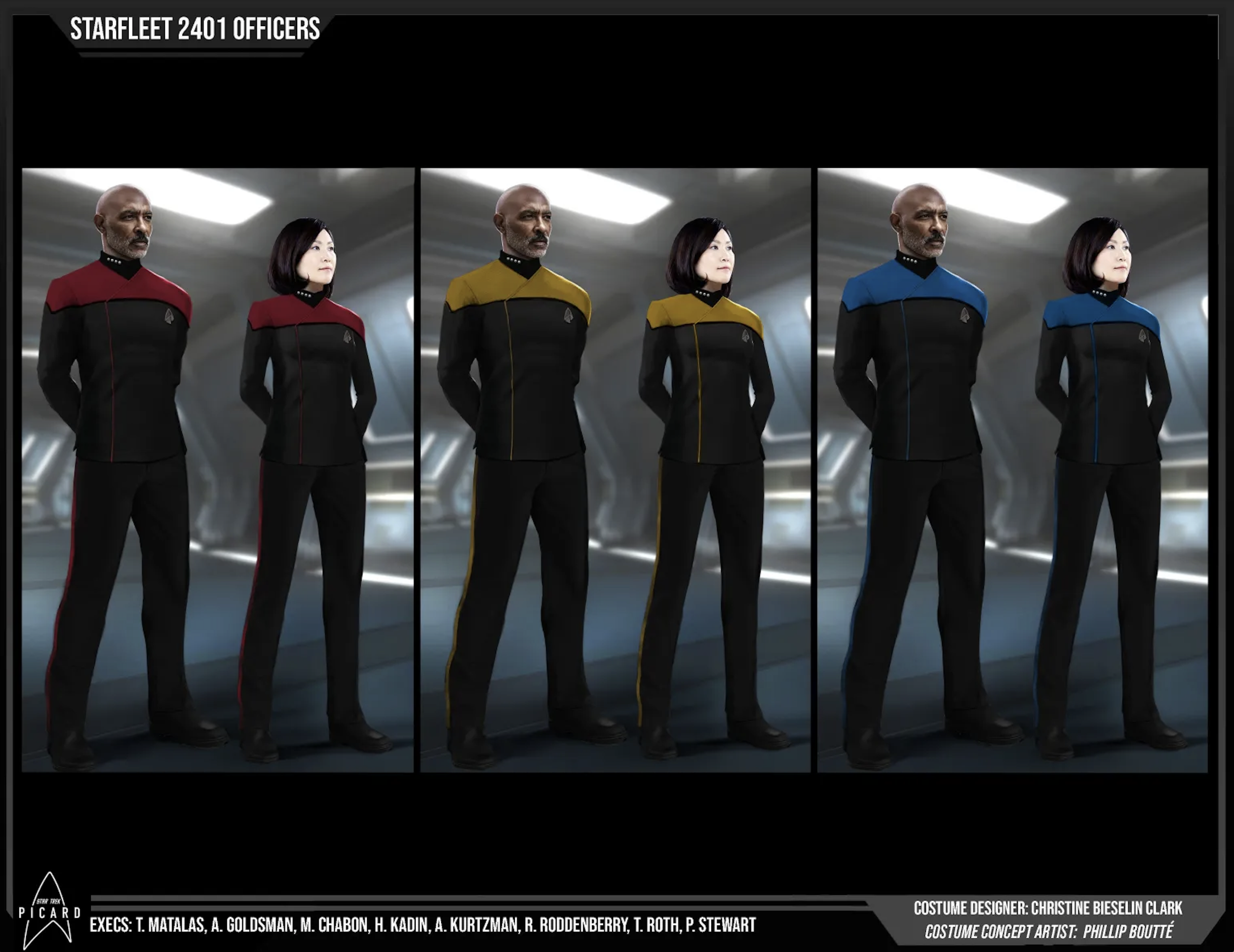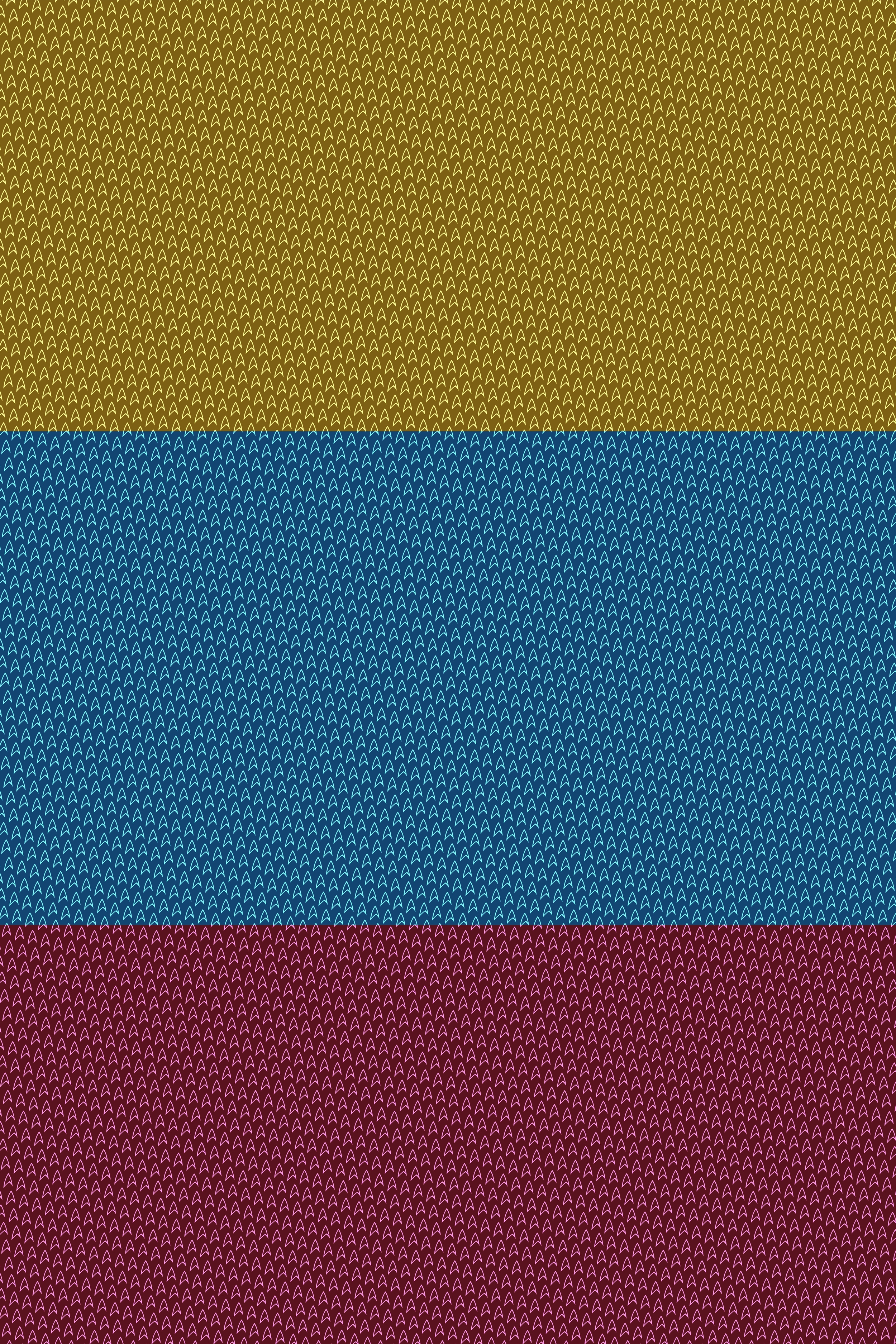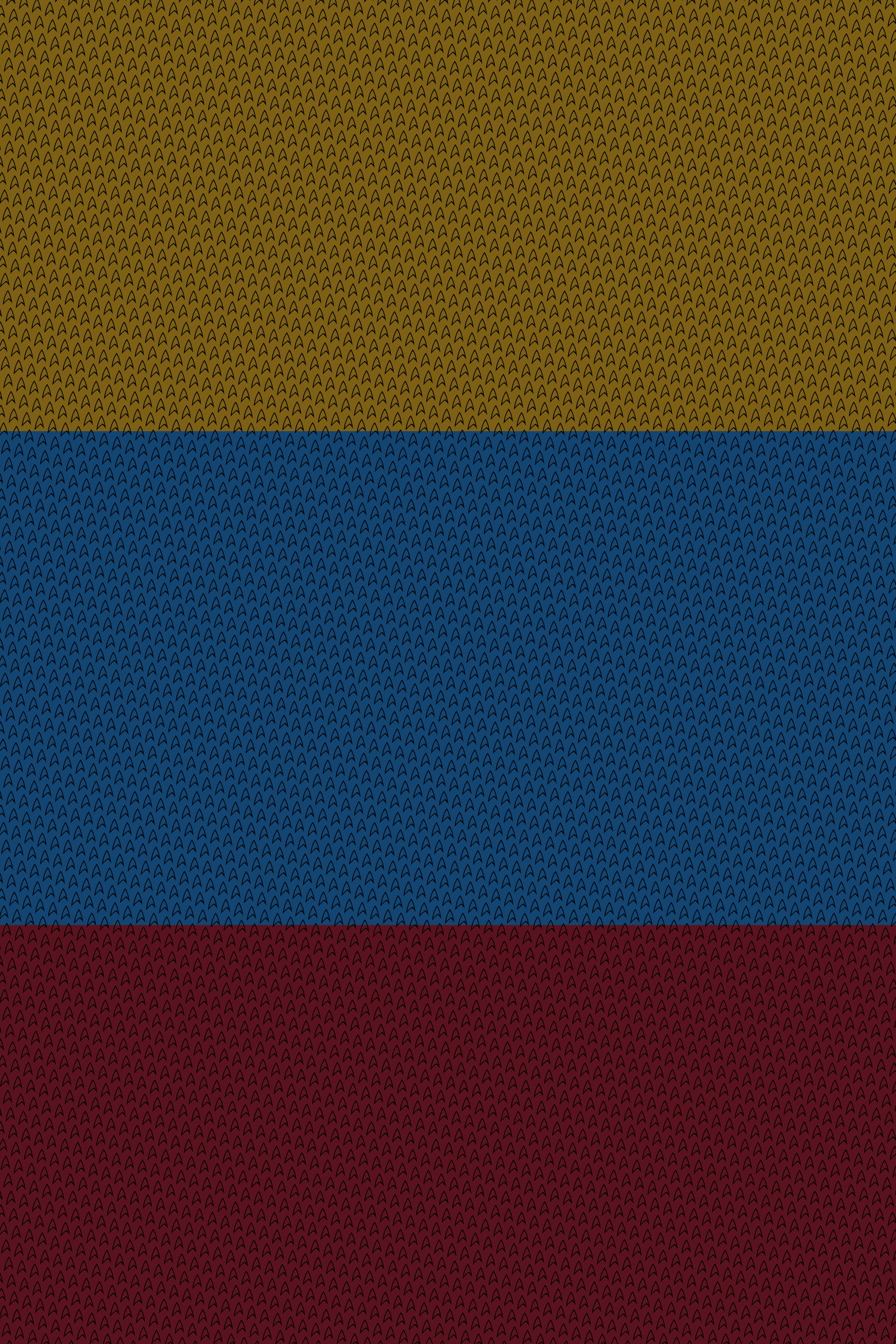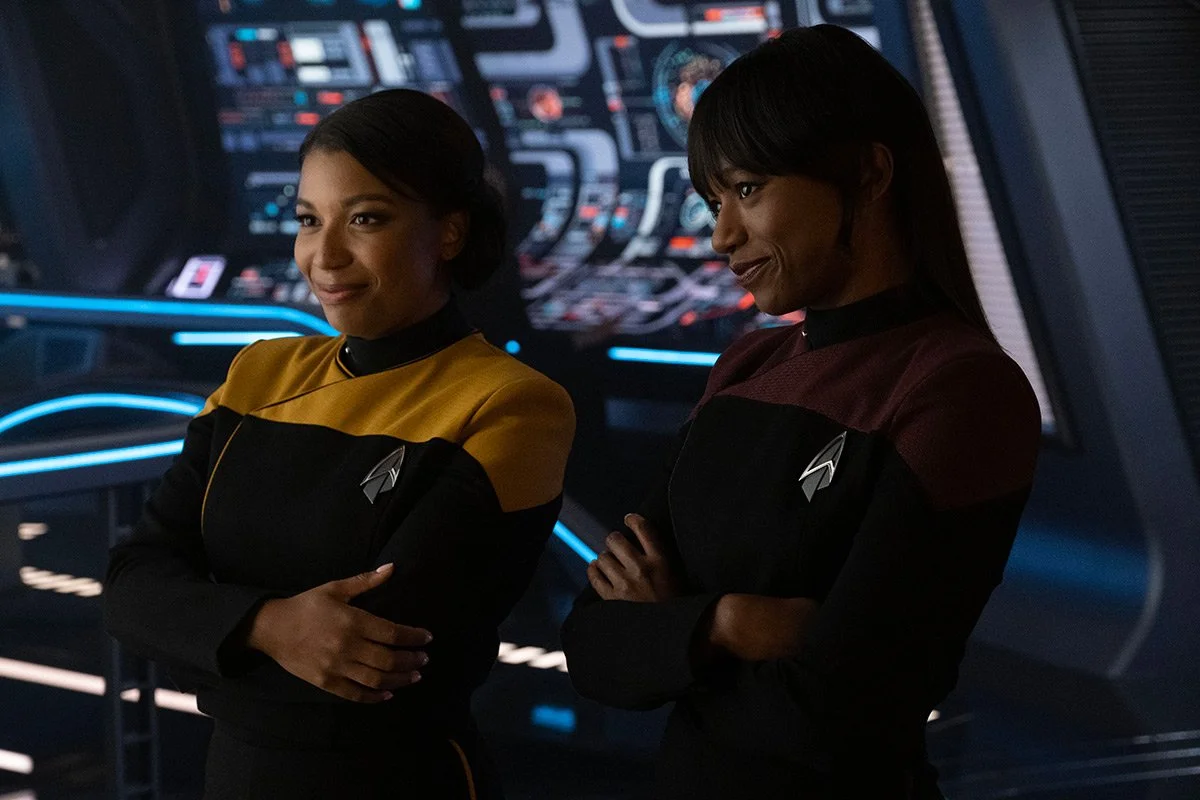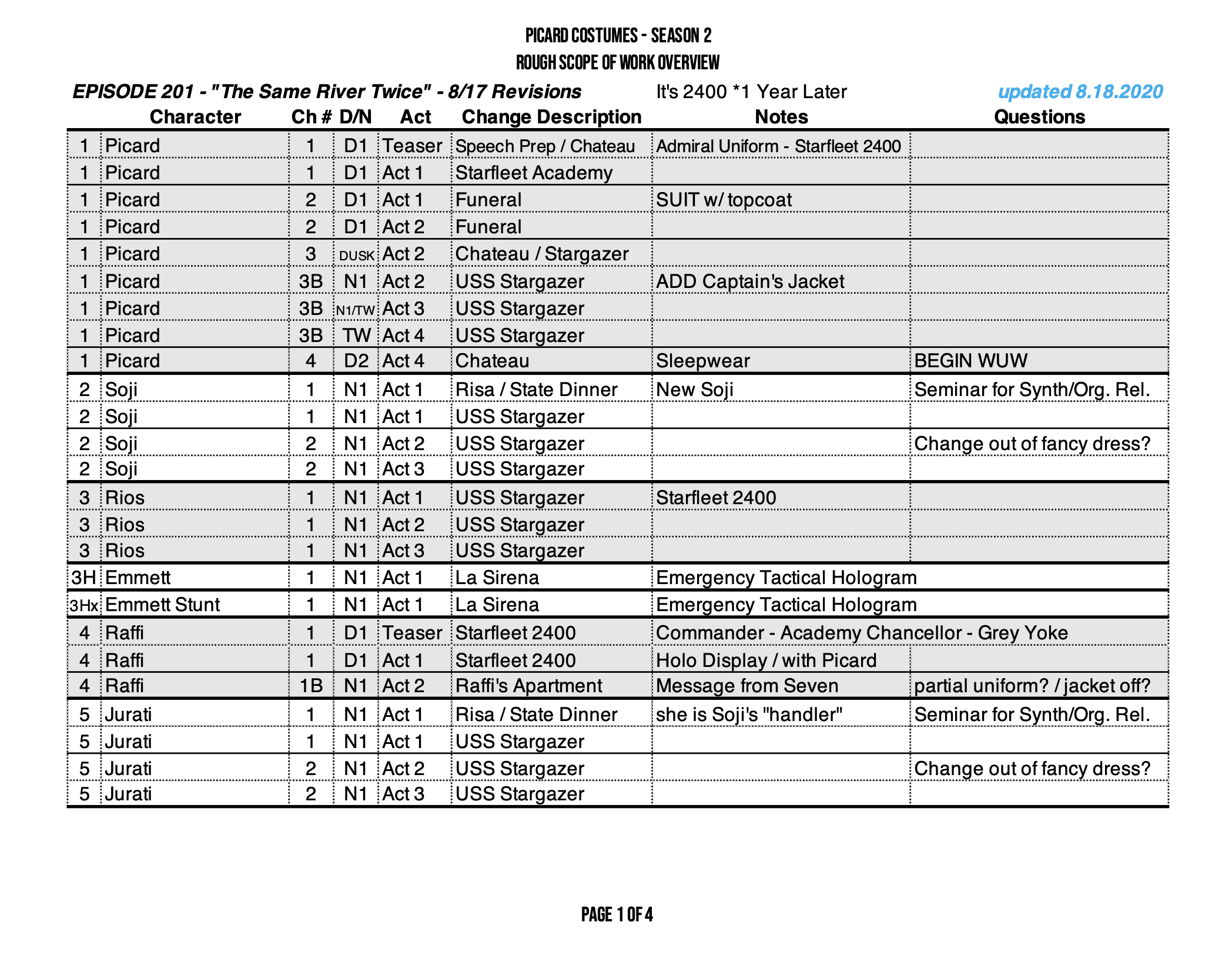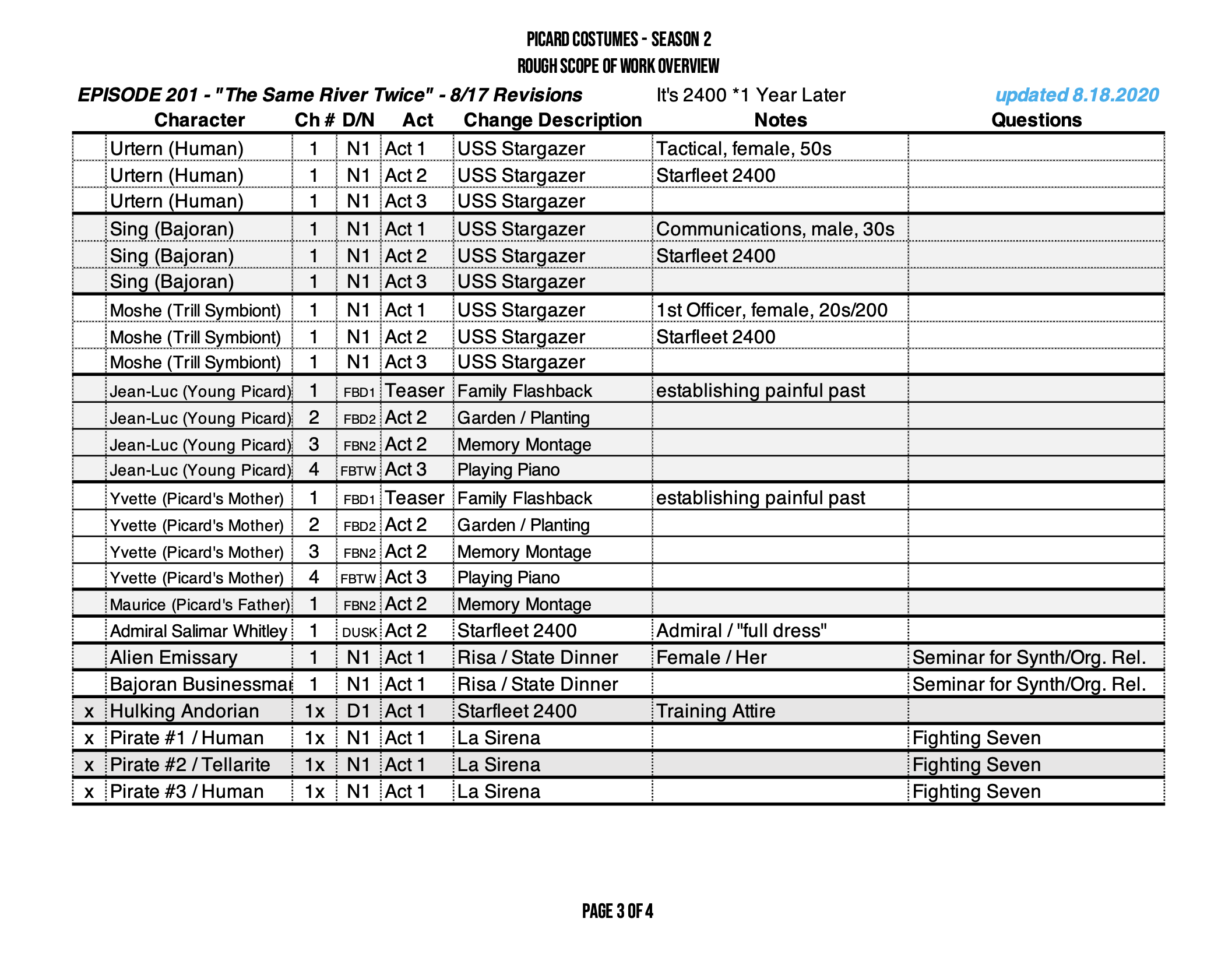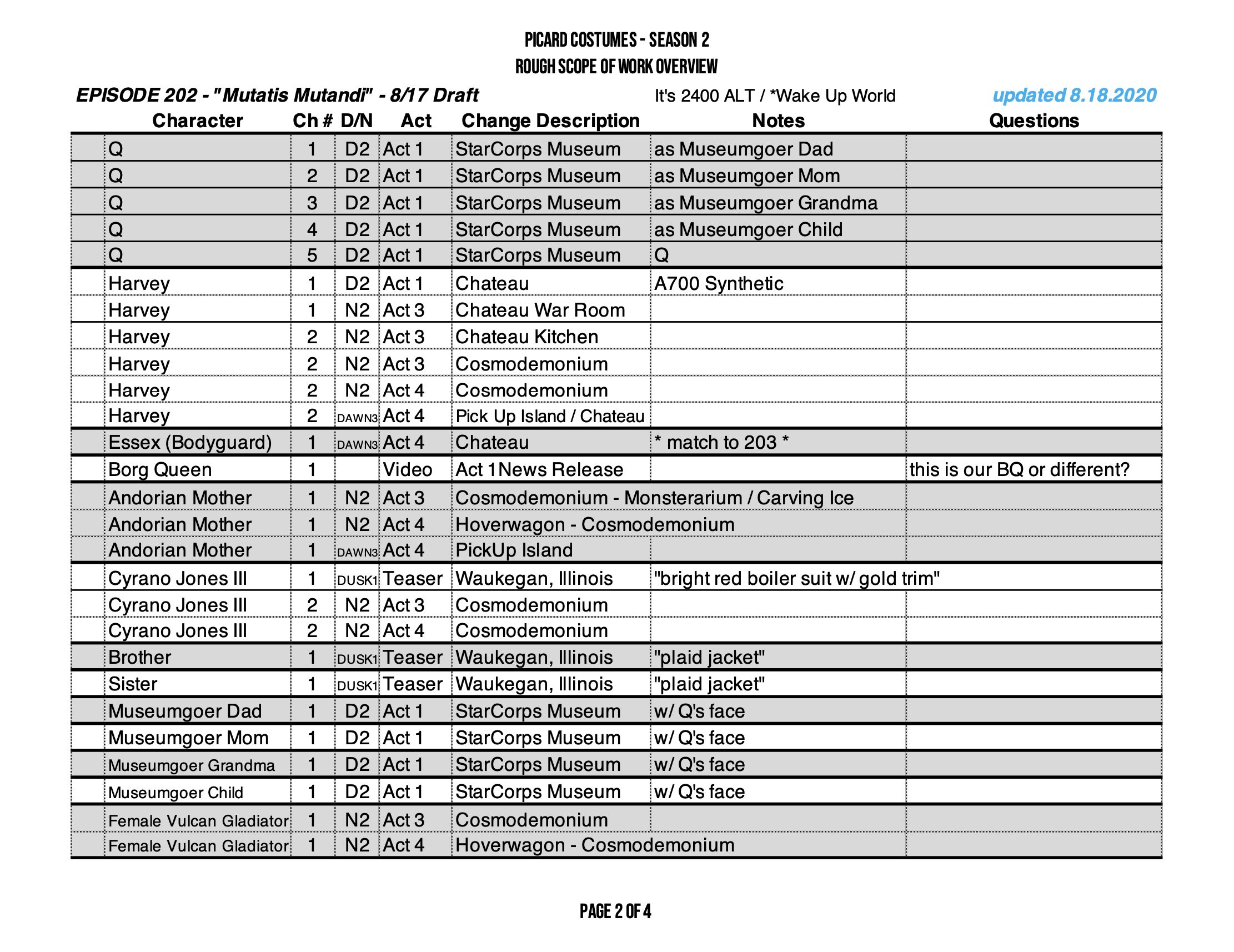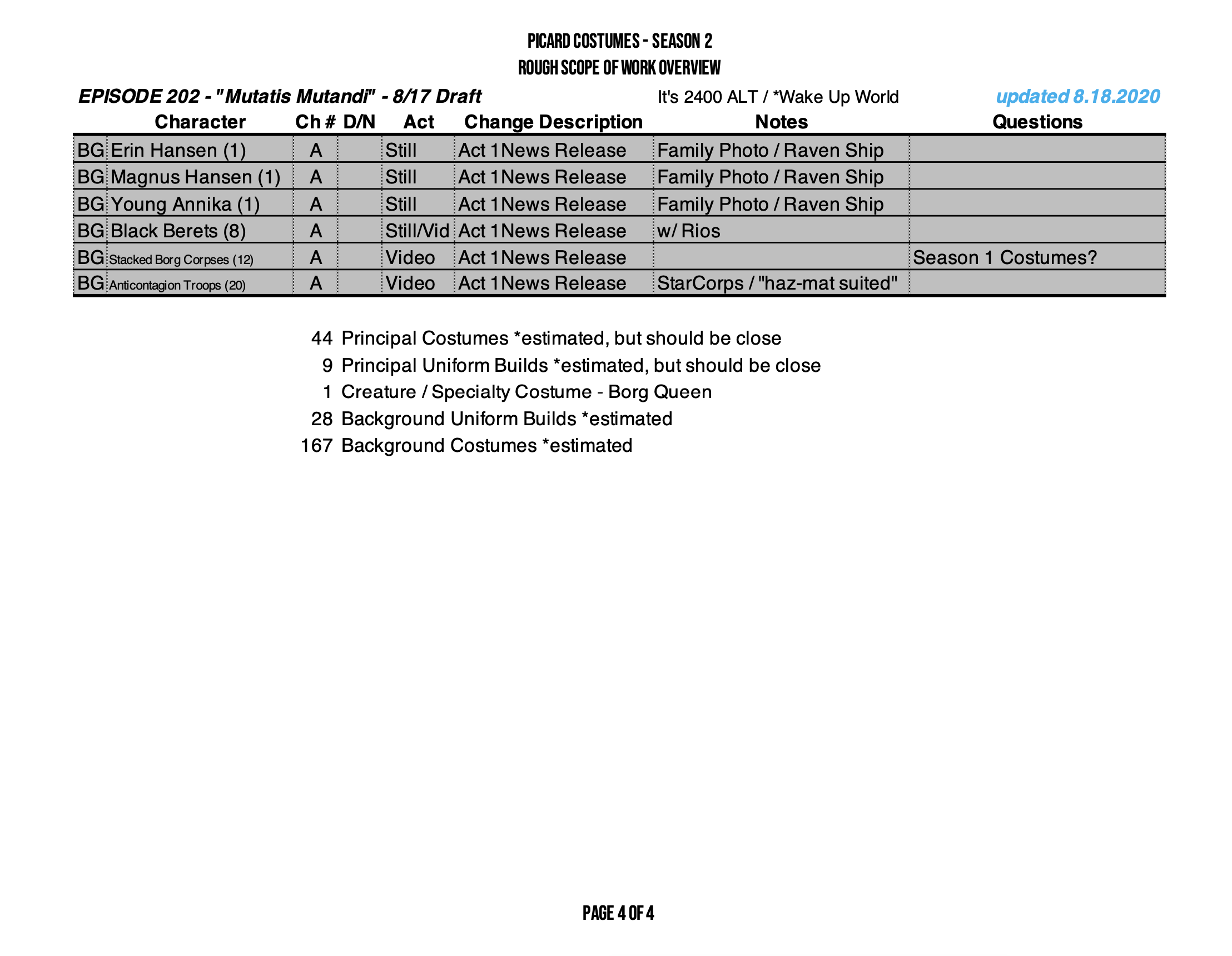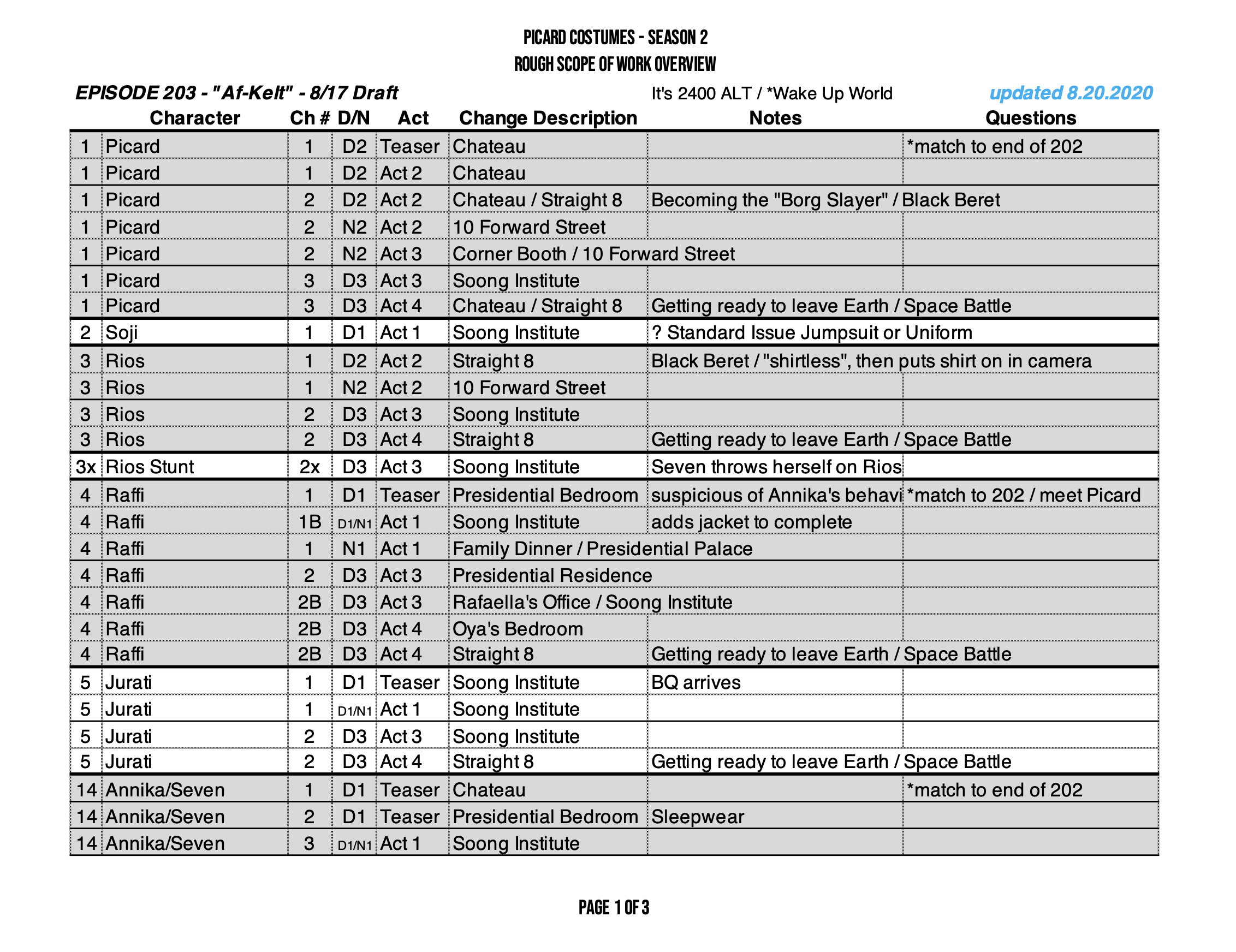Star Trek: Picard
Starfleet Uniforms
Redesigning the simultaneously iconic and ever-changing Starfleet Uniform
To boldly go where no costume has gone before…
Overview-
When approaching Season Two of Star Trek: Picard, our design team was tasked with reimagining the iconic Starfeet uniform. The uniforms had been redesigned for Season One of Picard but the fans reception was overall negative, and the fabrication made the costumes difficult to maintain between seasons, creating the need for the items to undergo extensive repair or remade entirely.
The studio and executive team wanted the new design to be an homage to the last seasons uniforms as well as those of previous series while providing the updated style and sensibilities that would resonate with a modern audience.
MISSION
Create a new line of Starfleet uniforms representative of each rank and division in an innovative and commemorative way.
CLIENT
Paramount Plus- Picard Season 2
ROLE
End-to-end senior Costumer working with Costume Designer, Assistant Costume Designer, Fabric Purchaser, and Manufacturing Foreperson.
TIMELINE
March 2020-July 2021
When creating a costume design that will ideally resonate within a larger canon of designs, it’s important to break down step-by-step what needs to be accomplished.
Our team determined that we needed to complete the following steps:
Step One: Ideation
Canon Research, Audience Feedback, Design Iterations, Studio/Producer Approval
RESEARCHING EXISTING DESIGNS
Our first step in moving forward was looking back; to do so we compiled a comprehensive visual timeline of every Starfleet uniform known to the canon of Star Trek (excluding the JJ Abrams universe). Our team used this as a cornerstone to our research and design presentations, and as the guide to establish legitimacy to our new designs.
The redesign of Starfleet uniforms introduced in Season 1 of Star Trek: Picard (Star Date 2399) in 2019 were the most closely aligned to the designs of Robert Blackman from Star Trek: Deep Space Nine (1993-1999) (Star Dates 2369-2375) and Star Trek: Voyager (1995-2001) (Star Dates 2371-2377) in that they used the yoke of the uniform to convey the field/division of the wearer. In order to continue with a natural uniform progression while making room for updates to meet studio and audience expectations, we decided to focus mainly on reworking the line work of the design as well as improving the quality of the manufacturing.
Complete Uniform Timeline
Key design features of Season 1 Costumes (Star Date 2399):
The uniform consists of 3 pieces: undershirt, pants, and tunic.
Triangular-cut opening for the top of the foot on pant.
Division colored shoulder/yoke & high Nehru-style collar.
Mock turtleneck with Starfleet symbol print in raised latex.
Audience Reception:
“The season 1 Picard Starfleet uniforms seem weird to me with the black separation lines. It looks like they were going for some kind of motorcycle jacket crossed with a naval uniform. It didn’t mix well, for me personally.”
— Reddit User
“This uniform feels oddly plain, considering it’s from a modern, 2019 show. It lacks the detail most contemporary genre shows heap onto their costumes—the result of using super high-resolution cameras, and larger-than-ever home theaters”
— TrekMovie.com
“The execution on screen needs some work. Reminds me of the sloppy season one DS9 uniforms with the flapping front cutouts.”
— Reddit User
Make it so.
Based on our research we were able to determine which design elements from previous series uniforms were successful in their reception amongst fans and series viewers.
During the initial phase of ideation, we explored different options for the jacket/tunic portion of the ensemble that aligned with this universes existing visual repertoire.
COSTUME CONCEPT ARTIST
Phillip Boutte Jr.
Initial design presentations to producers and studio.
Final Design Decisions:
Maintain use of yoke to show divisions by color.
Honors previous season’s design choices and is consistent with canon designs of Robert Blackman from DS9 and VOY.
Create curved line of yoke and shoulder point.
Reference to the very popular TNG uniforms designed by William Theiss and Durina Wood which is considered the iconic Captain Picard look.
Simplify neckline and make collar a V shape.
Simplifies the construction process by creating streamlined sizing and allowing for easier mass production for background actors.
Add side stripe to pants.
Hasn’t been implemented since the original Star Trek Movies: The Search for Spock, and The Voyage Home designed by Robert Fletcher. Also serves as a reference to the colored stripe on front pant notch used in TNG uniforms designed by William Theiss and Durina Wood.
Incorporate Starfleet insignia on fabric used for jacket yoke.
Adds visual interest without overwhelming the viewer.
Keep uniform in three pieces: tunic, undershirt, pants.
Easier for actors to dress in, more comfortable than a jumpsuit that may bunch up after long wear.
Final approved design.
Command variant, engineering variant, sciences variant.
Versions & Variations.
As there are many different ranks in Starfleet, we had to design variations of the officer uniform that would work for Admirals an other high-ranking officials.
The Admiral variant shown in this illustration maintains the same ensemble design as the Officer uniforms but indicates a higher rank through the use of gold accents and black banding around the cuff and yoke of the jacket.
We chose this as use of these details to indicate higher rank was consistent with the widely popular designs established for Starfleet uniforms from Star Date 2385 in Season 1.
Step Two: Prototyping
Fabric Sourcing, Color & Pattern Selection, Sampling & Fabrication
When we began sourcing fabric, we considered the following requirements”
COLOR
Must come in black and a white that is dyeable to create the division shades.
EASE OF USE
Require the least amount of manpower as possible to manipulate.
QUANTITY
Enough for 150+ costumes
DURABILITY
Must last for at least two seasons of filming. (Over a year of near-daily use)
Fabric Testing:
-
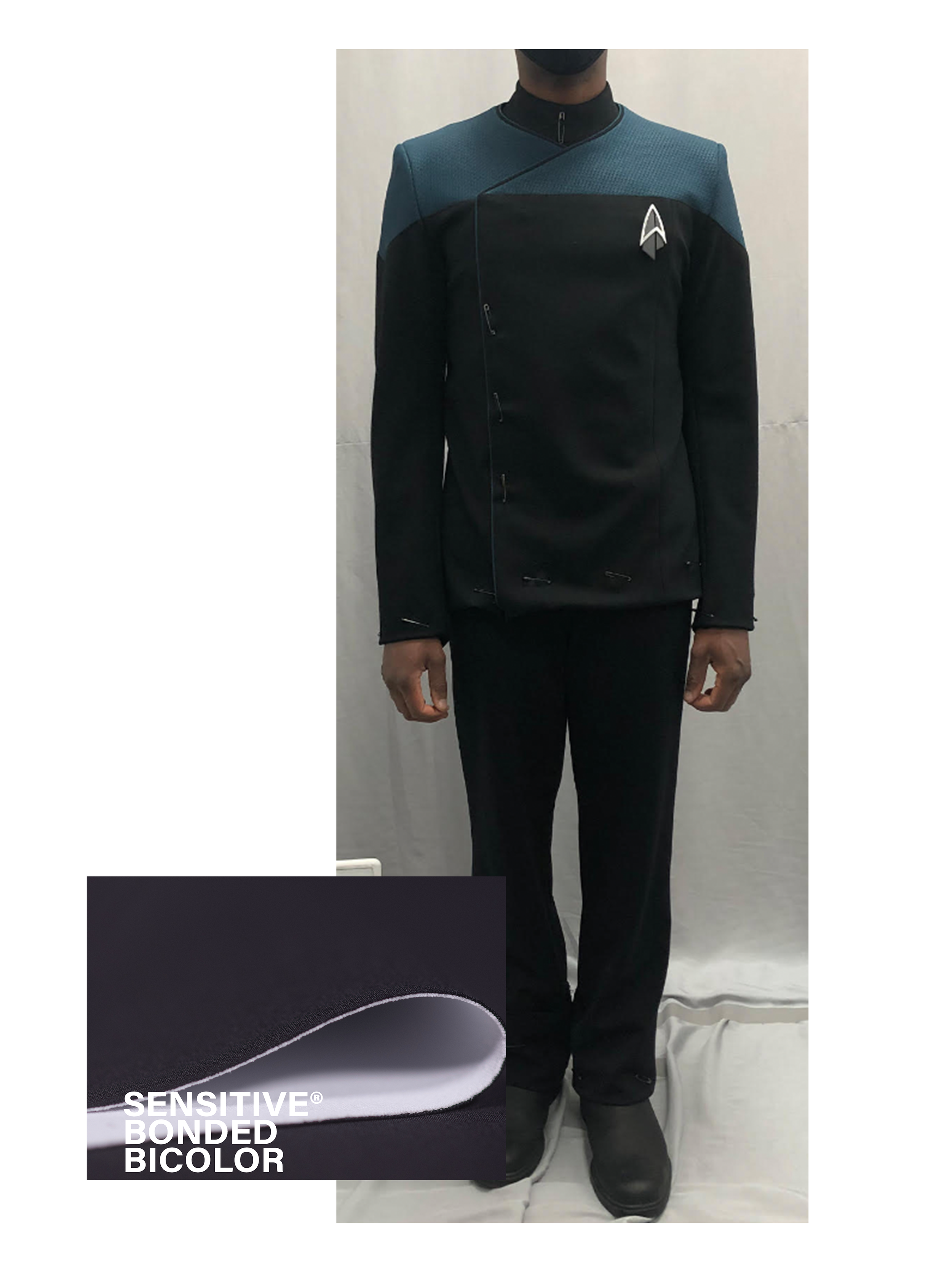
Sensitive® Bonded Bicolor
Composition: 75% microfibre PA / 25% EA (LYCRA®)
PROS: Even heavier than the regular Bonded version, this bonded bicolor provides a rigid structure that would need no lining or reinforcing to achieve the desired design.
CONS: In addition to being difficult to get in stock, it is only available in white or black and isn’t RTD, meaning the desired colored yokes would require additional materials and assembly to achieve.
-
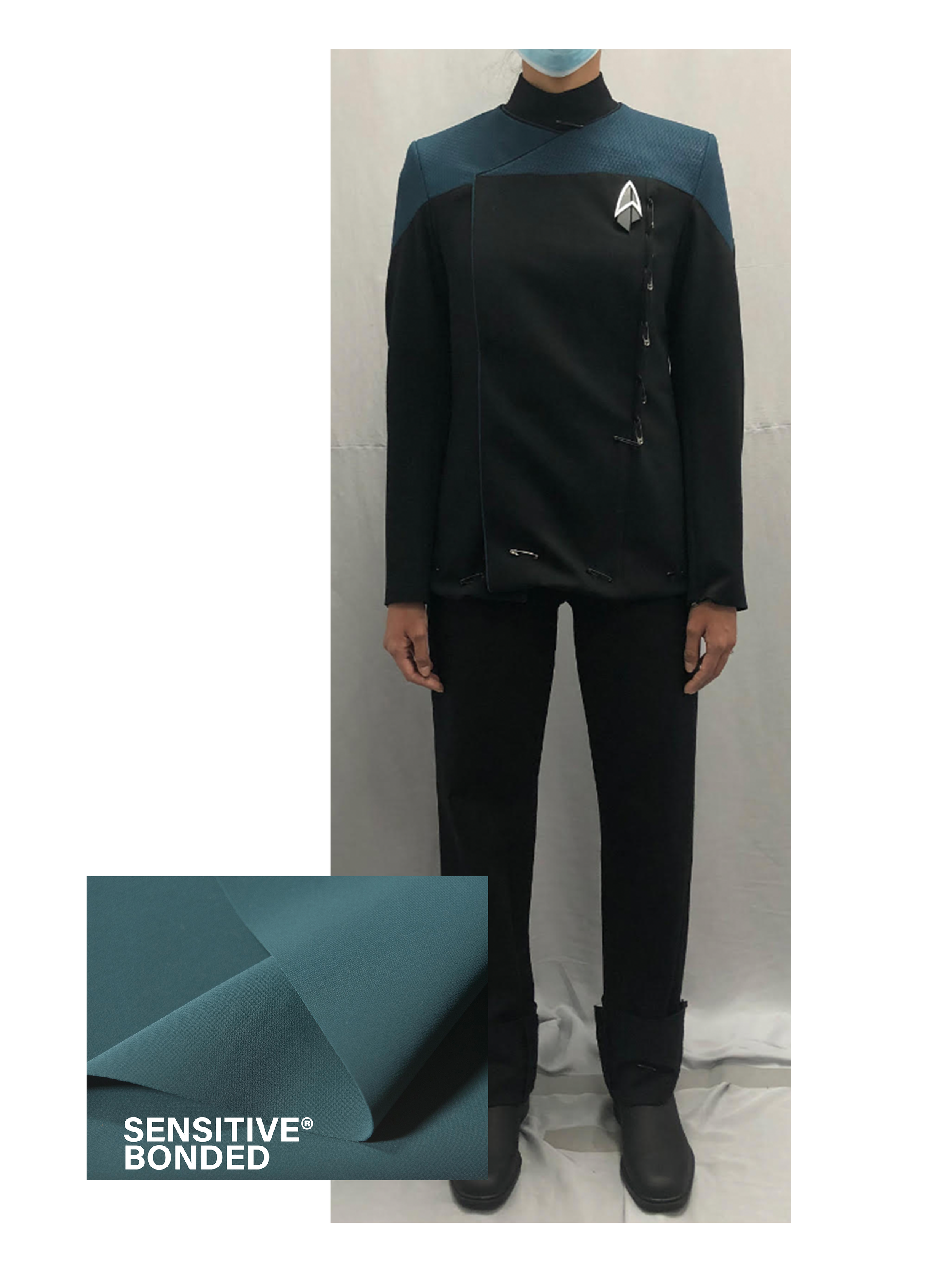
Sensitive® Bonded
Composition: 75% microfibre PA / 25% EA (LYCRA®)
PROS: Includes a 4-Way Stretch while still providing a weight that allows for increased durability and structure within a garment without requiring extra lining and/or reinforcing. Comes in a variety of colors including a Ready-To-Dye RTD white.
CONS: In 2020 when we were sourcing this fabric it was incredibly difficult to get in stock in any color as there was a global shortage. Sensitive Fabrics are the only ones who make what is commonly referred to as “Euro Jersey” and it is a popular choice amongst costume designers.
-
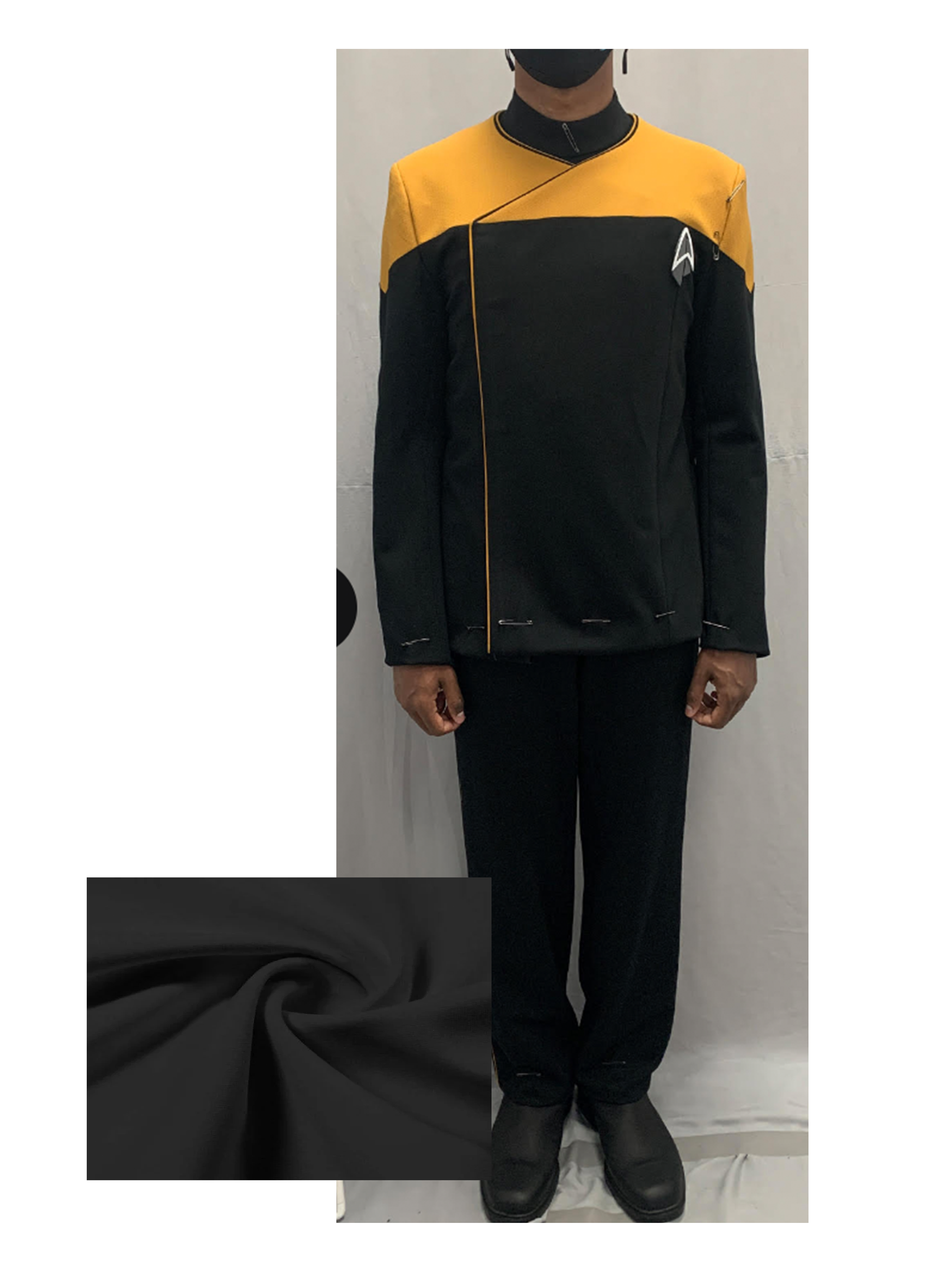
Synergy Polyester Lycra Fabric
Composition: 82% Polyester, 18% Lycra
PROS: Provides 4-Way Stretch, durability and shape retention while being moisture-wicking, and lightweight. Available in a wide variety of colors including RTD whites.
CONS: No real structure meaning each piece of the garment would require more materials for backing and reinforcement.
After creating a mock-up with each of our front-runners for fabric choices, we decided to move forward using the Sensitive® Bonded fabric.
Even though it was challenging to source, we decided that once we could confirm we could purchase the quantity we needed it would be the best choice to build uniforms from as it needed the least amount of additional materials to create the desired outcome.
Dimensional Ink Testing:
White ink- Selected for it’s high contrast on dyed Euro Jersey.
Gray ink- Difficult to see, muddled the dyed fabric.
Black ink- Difficult to see, muddled the dyed fabric.
Picard S1 incorporated a version of this “delta” print in the yoke of the design but the pattern was linear.
For the updated design we decided to create a diagonal repeat to add a subtle yet slightly more complex visual interest.
Additional fabrication/prototyping steps:
Step Three: Testing & Manufacturing
Creating Timelines, Cast Fittings, Final Approvals
Once we had decided upon materials and sourcing, and had begun the process of getting the fabric dyed and printed, we began a thorough review of the scripts as well as production documents like background breakdowns, shooting schedules, and day-out-of-days to begin planning how to produce the quantity of costumes required for filming.
We started but laying out the work we needed to do episode by episode, then character by character/group by group, and finally change (outfit) by change.
Scope of Work- Episodes 1, 2, 3
